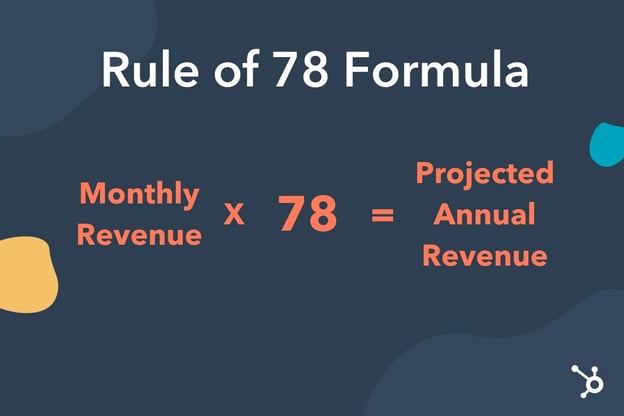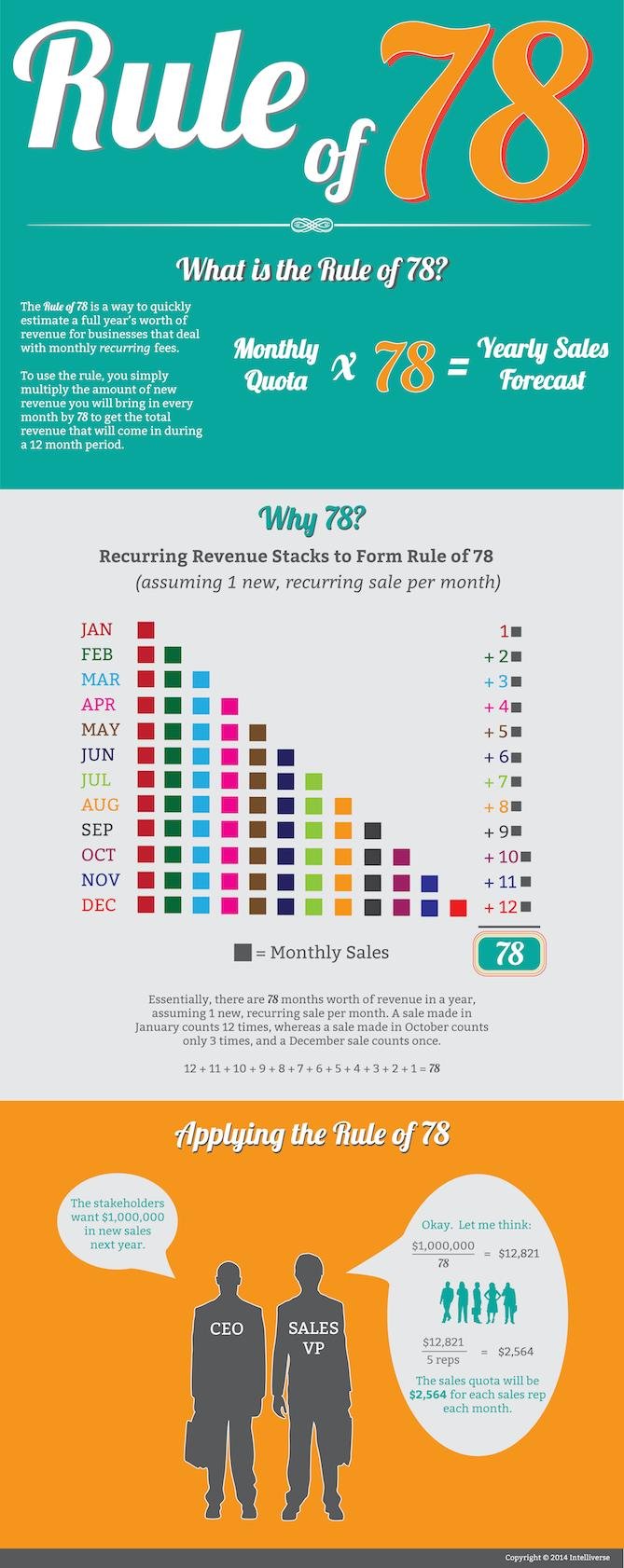The rule of 78 is one of the quicker, more straightforward ways to put together a solid estimate of your annual revenue. Here, we'll take a closer look at the rule, what it entails, how to use it, and how it can be leveraged to assist with calculating reasonable sales quotas.

Let's jump in.
The Rule of 78
Applying the rule of 78 is pretty straightforward. You simply multiply the amount of new revenue you plan to bring in each month by 78, and viola — you have the total revenue earned in a 12-month time span. Of course, this model assumes you bring in only one new client each month, and that each client pays the same fee every month.
Let's take a closer look at the what and why behind the rule.

What is the rule of 78?
The rule of 78 is an equation used to estimate a calendar year of revenue for businesses that charge recurring, monthly fees. It's typically used to help companies with activities like adjusting billing options, evaluating the need for new revenue streams, improving financial stability, and setting sales quotas.
As I touched on earlier, the rule of 78 rests on the idea that your revenue stream is always expanding — that you're consistently bringing on new customers who all pay the same price on a monthly basis. Why 78? Well, let's say you earn $1,000 in revenue when you acquire a new customer, and you expect to bring on a new customer every month.
If you bring on one customer in January, you can expect to see $12,000 in revenue from them in the calendar year. Then, if you bring on another customer in February, you can expect to see $11,000 from them in revenue for the year. Then, if you bring on another customer in March, you can expect to see $10,000 in revenue from them over the year — and so on and so forth.
The sum of all the digits between one and 12 is 78 — hence, the rule of 78. So in the case I've just described, the business in question would ultimately generate $78,000 in revenue over the calendar year.
Rule of 78 Calculation for Sales Quotas
The rule of 78 has several practical applications. It's used by businesses to guide forecasting, help with brainstorming new sources of revenue, dictate pricing models, and inform a number of other aspects of their operations that are impacted by revenue.
One of the most common ways businesses leverage the rule of 78 is to help set sales quotas. Let's take a look at what that might look like in practice.
Rule of 78 Example
For instance, let's say the VP of sales at a company wants to bring in $1,000,000 of new revenue in the coming calendar year. One way to figure out what they need from their sales team to get there is to essentially reverse the rule of 78 process detailed above. That would give them a hard estimate of what it's going to take.
Divide their target figure of $1,000,000 by 78. That would give them a requisite figure of $12,821 in revenue per month to reach their goals. If they were overseeing a sales team of five, they would divide that $12,821 by five — giving them a monthly sales quota of $2,564 for each rep.
For a visual explanation of the Rule of 78, check out the infographic below.

Ultimately, the rule of 78 is a convenient, if flawed, way to quickly estimate your annual revenue for a variety of purposes. If you leverage it, make sure you can count on a steady stream of gradually expanding revenue — if that's the case for your business, you'll be able to get a lot out of the equation.
Editor's note: This post was originally published in January 2015 and has been updated for comprehensiveness.

